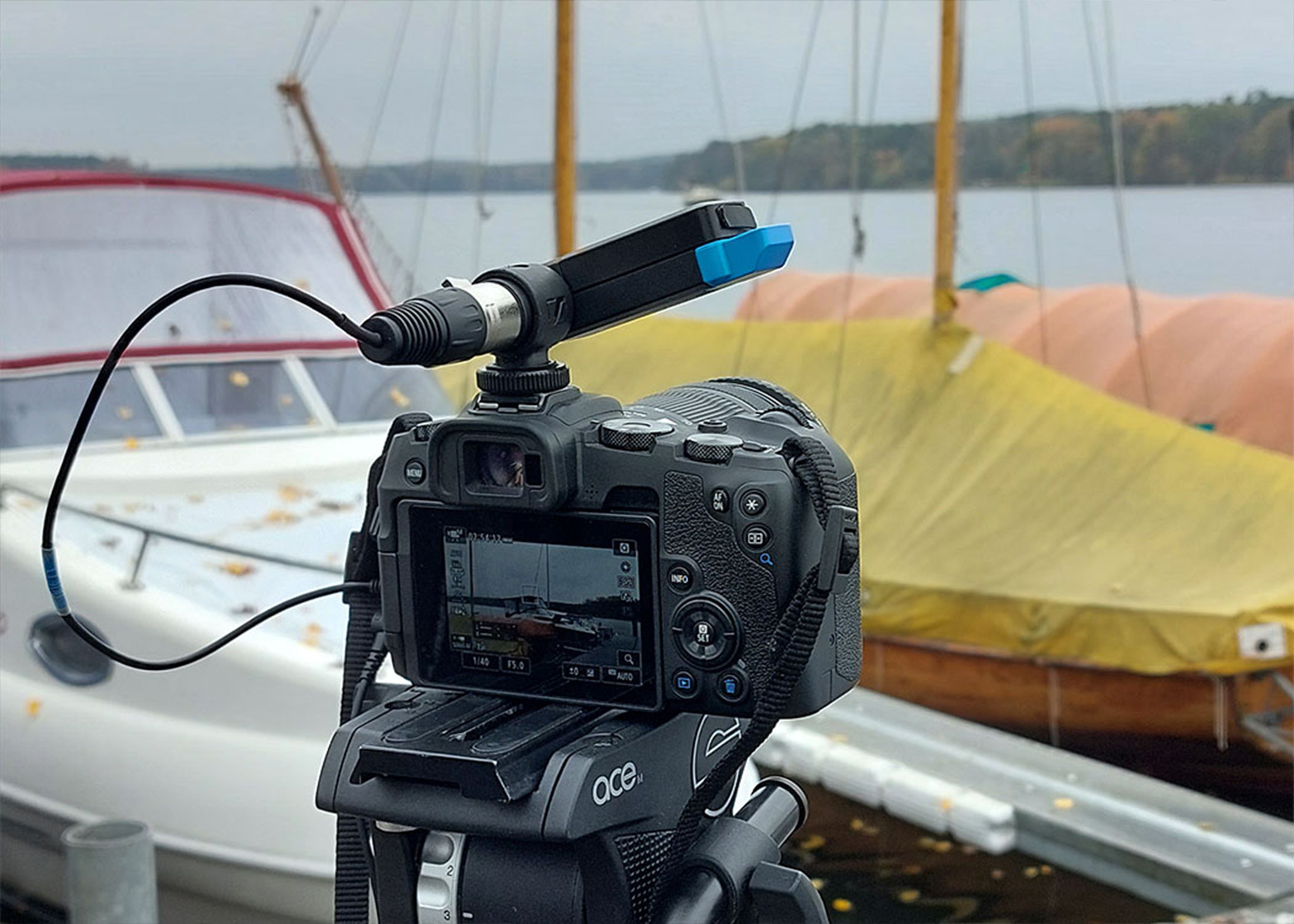
Image film for RC Rapid Berlin
From concept to finished film: here, students Anne-Sophie Heider, Eowyn Heinrich, Fabienne Elbert, Peter Göseke and Elias Jakob (B.A. Journalismus und Unternehmenskommunikation /B.A. Journalism and Corporate Communication, German only) give us insights into their image film project, reveal the challenges they faced while shooting the film and share tips they would give to other students for their own projects.
Overview
-
Study program
B.A. Journalismus und Unternehmenskommunikation (B.A. Journalism and Corporate Communication, German only)
-
Supervision
own project
-
Subject
PR, film, production
In the PR film production module, you made a PR film for the rowing club Ruderclub Rapid Berlin e.V. How did that come about? Were you personally connected to the club?
The idea of producing a PR video for the rowing club Ruderclub Rapid Berlin e.V. came from our fellow student Anne-Sophie. She has been rowing there for many years. When she asked at the club, everyone was immediately enthusiastic. Of course, this also raised our own expectations of the film. And we thought we would promote the sport of rowing. But it was not even clear at first whether we would be able to film on site at all. Because of the fall vacation, the training we wanted to film didn’t take place in Berlin at the end of October. So we were caught off guard. Without a proper introduction to all the technology, we went to the rowing club in Berlin-Grünau and filmed the very weekend after the first seminar. We took our chances, so to speak.
What were the most important steps in planning and implementing your project?
The most important thing about the whole project is to have an “object” or a vision at all. What do I want to film? What do we want to address? What permits do we need to obtain? Then it is important to have a structure and to think together about what kind of video you want to make. What style do we want to adopt? Rather dynamic or rather calm? We wrote all of this very precisely in our script. That’s part of good preparation. Without a script, it’s very difficult to piece the individual clips together at the end. During the shoot, you had to be very careful to capture the desired scene exactly. If you don’t have good material, it’s very difficult to produce a good PR film.
What were some of the biggest challenges? What would you have liked to have known earlier and what would you do differently next time?
One of the biggest challenges was definitely producing good material. And one thing was clear from the start: almost nothing turned out the way we had imagined, but that’s what makes a shoot.
You just have to work with what you have. On the boat, for example, it was very difficult to film because everything was shaky and the focus kept changing. It was also hard to film in bad weather (it was very cloudy where we were). You always have to pay attention to the conditions. Even the best lighting technology and post-processing can’t do much about a gray cloudy sky.
Often, you also needed a lot of self-confidence to direct the protagonists if, for example, a scene wasn’t perfect. The post-production on the PC was almost the most exhausting part. First, we had to sift through the material and say goodbye to scenes. That took several hours. It was difficult to say goodbye to material because others didn’t like it or because the quality was then worse than expected. Then we agreed on a piece of music that we wanted to work with. We then edited on this basis.
Working with the editing program was very demanding and took up most of the time. Many hours at university. Agreeing as a team takes a lot of patience and argumentation, which is probably the biggest challenge. Next time, we should plan more time for the introduction to the technology before shooting and for the possibility of shooting additional scenes.

In a nutshell: What advice would you give Media University students for their own PR film?
We would advise Media University students to prepare thoroughly for their own PR film. You don’t do a project like this on the side. It takes a lot of time and commitment. You should know exactly what you want to shoot. Otherwise you end up with too much material or not the material you actually needed.
Be flexible! Accept that due to limited resources (time, location, etc.), not everything in the planning or vision can be implemented, as difficult as that may be. Make sure you have the perfect camera and sound settings on site. Make sure that everyone in the group learns everything (from camera to sound to editing). It’s also very important to feel comfortable in the team. That makes the work the most fun, although it also offers a lot of potential for conflict. Be willing to compromise! And of course: have fun!
Thank you for the exciting insights into your project. All the best and good luck with your studies!










